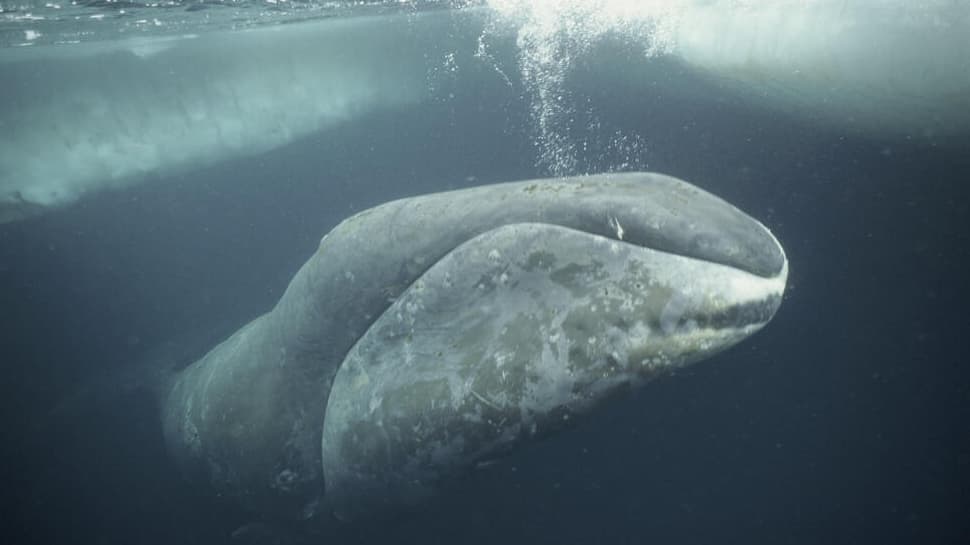Just imagine this: deep beneath the icy, remote waters of the Arctic Ocean, a truly ancient Methuselah still glides fearlessly. This creatures has surprised a whole lot of scientists with them believing to have found the oldest living whale ever recorded, a bowhead estimated to be an astounding 211 years old. Think about that for a moment. This creature was born around 1814. Napoleon was just retreating from Russia, James Madison was in the White House, and the first photograph was still years away. While humanity was busy inventing steamboats and fighting wars, this whale began its long, cold journey through the Arctic. In its long lifespan, the bowhead whale has seen it all – metaphorically, right from the end of Napoleonic Wars, industrial revolution, American Civil War, World Wars, space races, digital revoultion and climate change to name a few.
And the story of its lifespan doesn’t stop there. Researchers at CSIRO, Australia’s national science agency, peering into the whale’s genetic code, now believe bowheads could potentially live for an incredible 268 years. Metaphorically speaking, this single animal has “witnessed” the entire sweep of modern human history – from the clatter of the Industrial Revolution and the tragedy of World Wars to our first steps on the moon and the birth of the internet. All while navigating its frozen, silent world.
A Living Relic in a Fast-Moving World
Bowhead whales are marvels of nature. Their massive skulls, strong enough to shatter thick sea ice, are just one of their extraordinary features. They also hold the title for the longest-living mammals on our planet. While many live well past a century, this particular individual truly amazed marine biologists. The first clues to its incredible age came from Alaskan Inuit whalers decades ago, but the real shocker arrived in 2007 when a fragment of an old harpoon was discovered lodged in its blubber.
This wasn’t just any harpoon. It was a piece of 19th-century technology, a tangible link to a whaling attempt long past. This discovery was a key piece of the puzzle. Later, a delicate biochemical analysis of the whale’s eye lenses – a process surprisingly similar to counting tree rings – lent further support to its astonishing age.
Echoes in Indigenous Wisdom
For the Inuit communities of Alaska and Canada, the bowhead isn’t merely a subject of scientific wonder; it’s woven into the very fabric of their culture. Their oral histories, passed faithfully from one generation to the next, have long spoken of these whales living incredibly long lives. These ancient stories were, in fact, some of the earliest hints that bowheads might outlive previous scientific assumptions. It just took modern science a bit over a century to catch up and confirm what Indigenous knowledge keepers had understood for so long.
An Ancient Swimmer in a Modern, Changing Ocean
However, this creature is set to feel the heat of climate change soon. Climate change is hitting the Arctic hard and the ice, its lifelong companion, is thinning. The seas are warming. And the once-quiet waters are increasingly disturbed by shipping traffic, all disrupting the bowhead’s ancestral home. Bowhead whales were hunted nearly to extinction in the 19th and early 20th centuries and are currently listed as a species of “Least Concern” by the IUCN. However, the change in environment may prove to be vulnerable even a species with such a long lease on life, feel scientists.
“This predominantly Arctic species is associated with ice floes. Its movement patterns are therefore influenced by the melting and freezing of the ice. Bowhead whales are capable of breaking through sea ice at least seven inches thick with their large skulls and powerful bodies,” writes the World Wild Life site.
The Silent Wisdom of the Deep
We’ll likely never know the full story etched into this whale’s long existence – the epic migrations undertaken, the ancient songs sung in the deep, the primal battles survived. But its very presence, its quiet persistence, speaks volumes about resilience. It’s a humbling thought, that this creature has outlived empires, witnessed inventions that reshaped human civilization, and swam through eras that predate the very idea of modern science.



